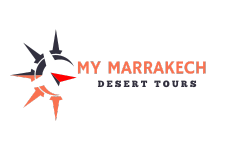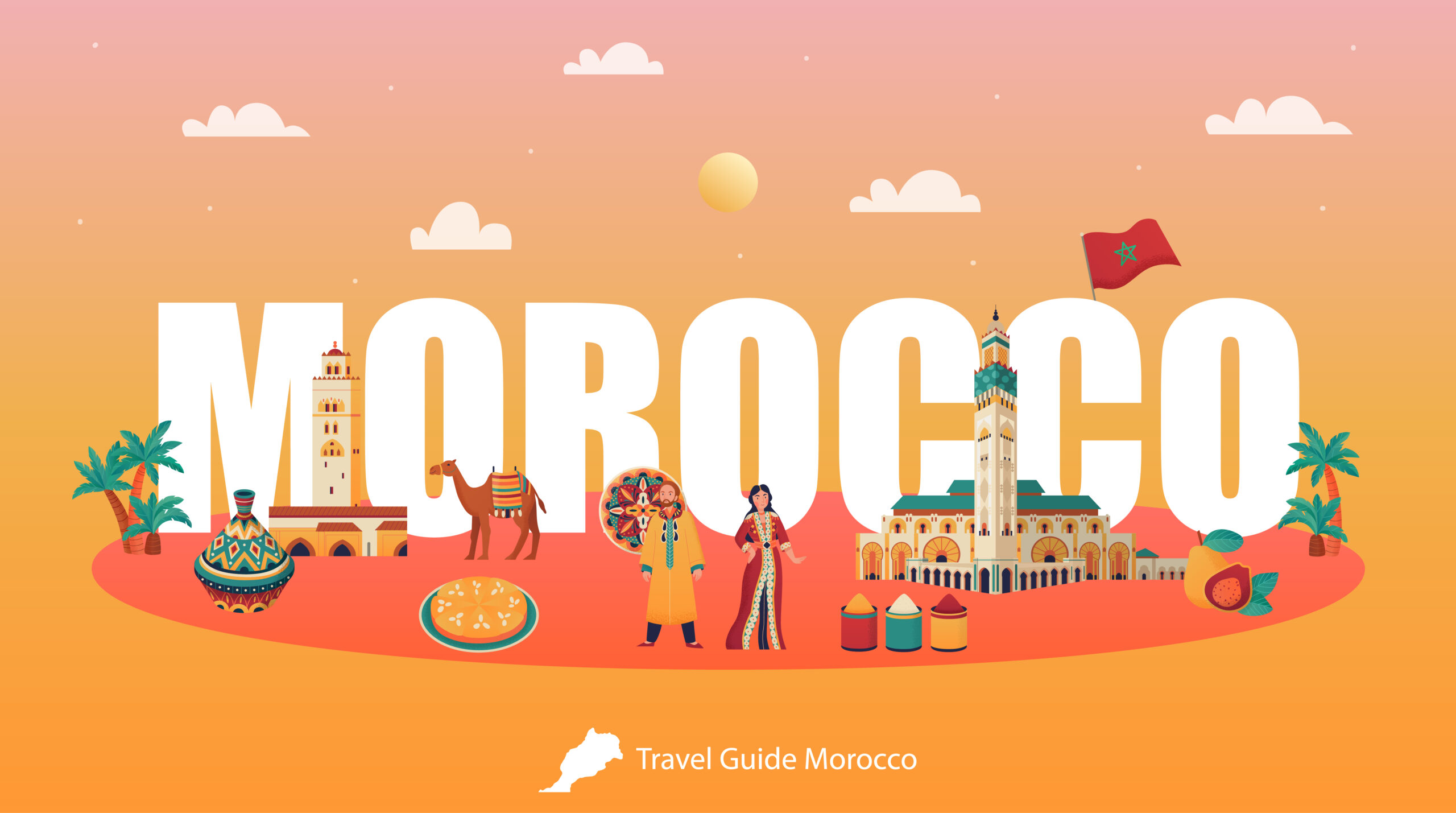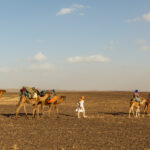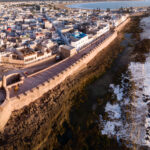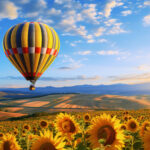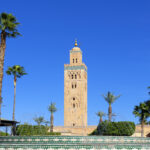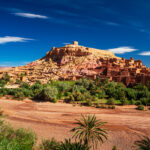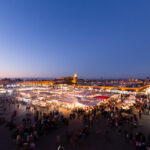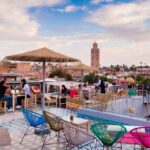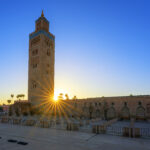What is Morocco Known For? A Journey Through Its Rich Heritage, Landscapes, and Culture
Morocco, is a country that has captivated the hearts of travelers for centuries. From the bustling streets of ancient medinas to the serene expanses of the Sahara Desert, Morocco offers a unique blend of experiences that cater to every type of traveler. As a tour company based in Marrakech specializing in Morocco desert tours, we are passionate about sharing what Morocco is known for and why it should be at the top of your travel list.
1. A Rich History and Magnificent Monuments
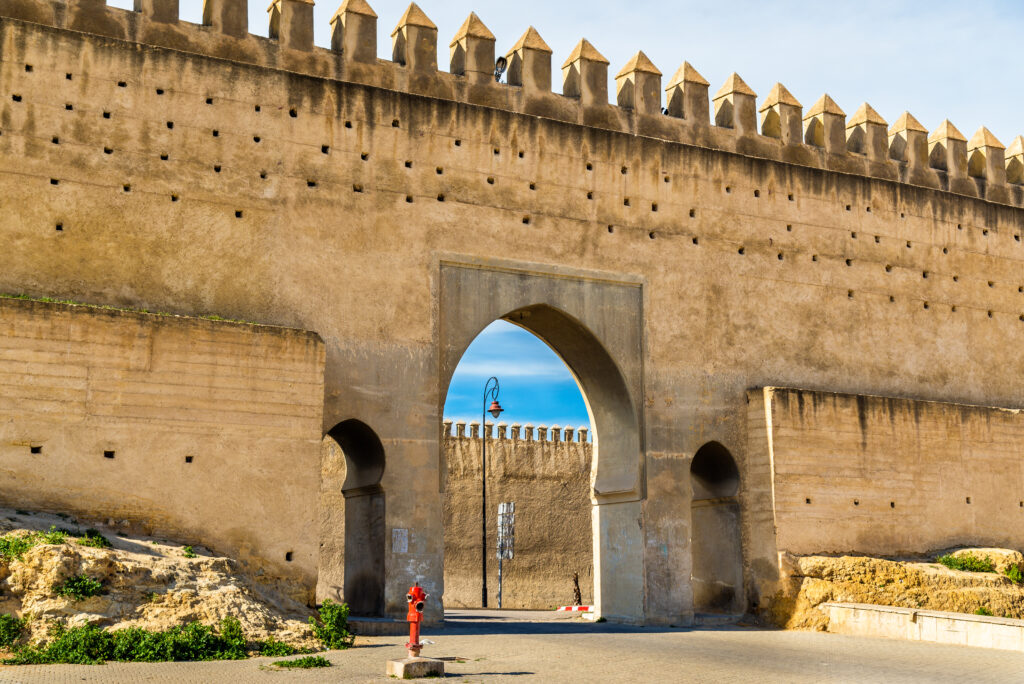
Morocco’s history is as vibrant as its landscapes, shaped by a myriad of cultures including the Phoenicians, Romans, and Arabs. This rich tapestry of influences is evident in the country’s architecture, with historical monuments in Morocco standing as a testament to its storied past. The cities of Meknes, Fez, and El Jadida are particularly renowned for their historical landmarks.
- Meknes: Known as the “Versailles of Morocco,” Meknes is home to the famous Prison de Kara and the grand Bab Mansour gate, showcasing the grandeur of Moroccan imperial architecture.
- Fez: The spiritual heart of Morocco, Fez is famous for the Bab Boujloud (Blue Gate) and the ancient University of Al-Qarawiyyin, the world’s first university, which continues to shape the minds of scholars today.
- El Jadida: This coastal city is a UNESCO World Heritage site, known for the Cisterns of the Portuguese, a remnant of the city’s Portuguese colonial past.
- Rabat: the capital city, beautifully blends historical architecture with modernity. The Kasbah of the Udayas, perched along the Bouregreg River, offers stunning views and a glimpse into Morocco’s medieval past, contrasting against the backdrop of modern white buildings and blue skies.
2. Culinary Diversity: A Feast for the Senses
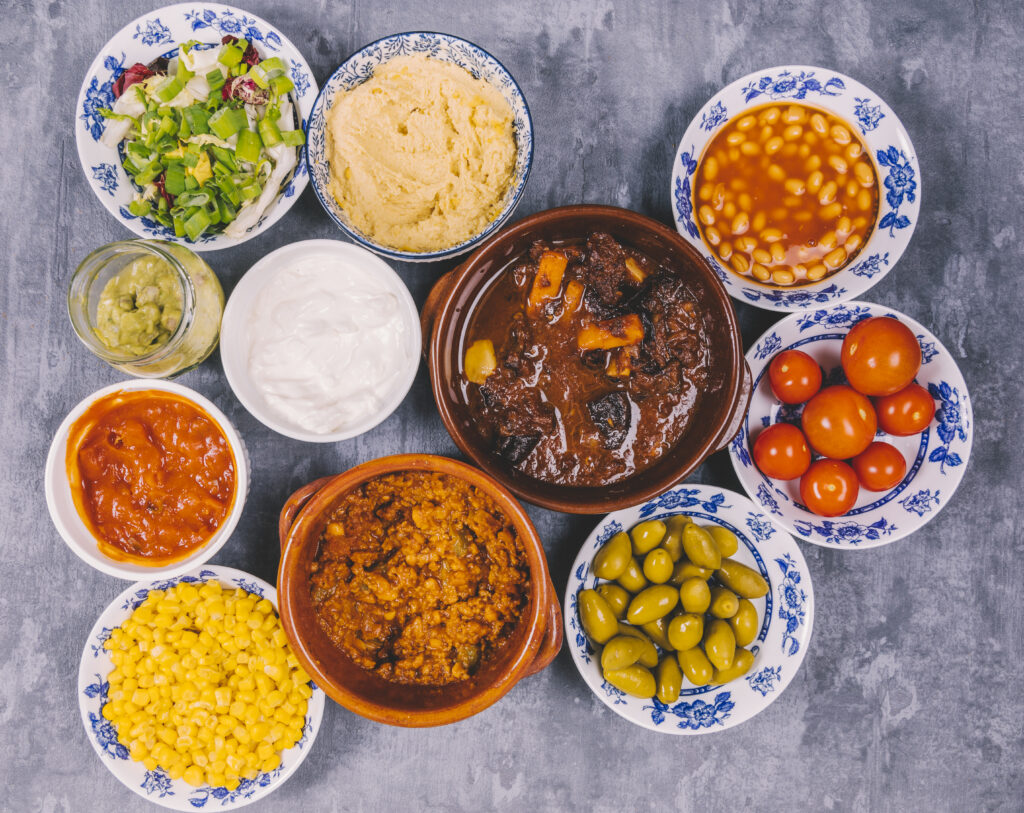
Moroccan cuisine is a celebration of flavors, aromas, and textures, influenced by a mix of Berber, Arab, and Mediterranean culinary traditions. It’s no wonder that Moroccan food is renowned worldwide for its richness and diversity.
- Tagine: The well Known Moroccan dish, tagine, is a slow-cooked stew made with meat (often beef, chicken, or lamb) and a variety of vegetables, all seasoned with a unique blend of spices like cumin, turmeric, and saffron. The result is a dish that is both flavorful and aromatic.
- Couscous: Traditionally served on Fridays, couscous is a staple in Moroccan households. It’s typically served with a rich meat or vegetable stew, creating a hearty and satisfying meal.
- Seafood: Coastal cities like Essaouira and Agadir are famous for their fresh seafood. Grilled fish, shrimp, and calamari are often served with a zesty charmoula marinade, a blend of herbs, spices, and lemon juice.
For those eager to learn the secrets of Moroccan cooking, cities like Marrakech offer cooking classes where visitors can learn how to prepare traditional dishes. These classes are not just about cooking; they are an immersion into Moroccan culture, where food is a central element of family and community life.
3. Medinas: The Heartbeat of Traditional Morocco
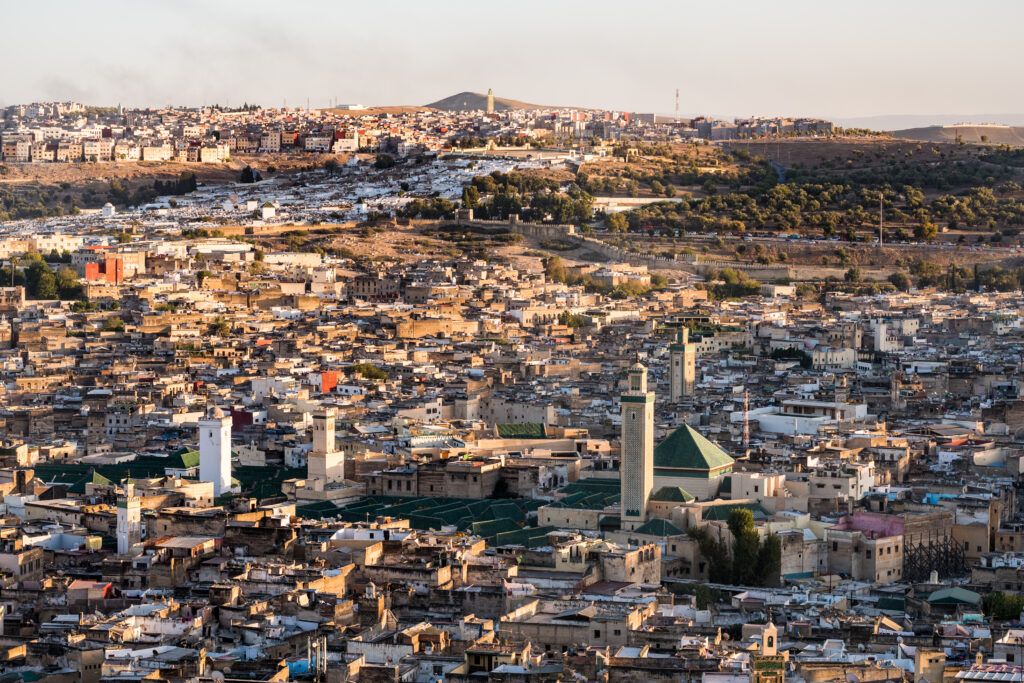
The medinas of Morocco are the soul of the country, where the past meets the present in a labyrinth of narrow streets, bustling markets, and historic buildings. Each city has its own unique medina, offering a glimpse into the daily lives of Moroccans.
- Fez Medina: One of the oldest and most famous medinas in the world, Fez Medina is a UNESCO World Heritage site. Its narrow alleys are lined with shops selling everything from spices and textiles to leather goods and traditional crafts. The scent of fresh bread baking in communal ovens and the sound of artisans hammering away in their workshops create an atmosphere that is both timeless and vibrant.
- Marrakech Medina: The medina of Marrakech is a sensory overload in the best possible way. The iconic Jemaa el-Fnaa square is the heart of the medina, where snake charmers, street performers, and food vendors come together in a lively spectacle that is quintessentially Moroccan. Surrounding the square, the souks (markets) are a maze of narrow alleys filled with shops selling everything from handmade carpets to aromatic spices.
Exploring the medinas is like stepping back in time, where the old-world charm of Morocco is preserved in every corner.
4. Camel Rides, Sand Dunes, and Quad Biking: Adventures in the Sahara
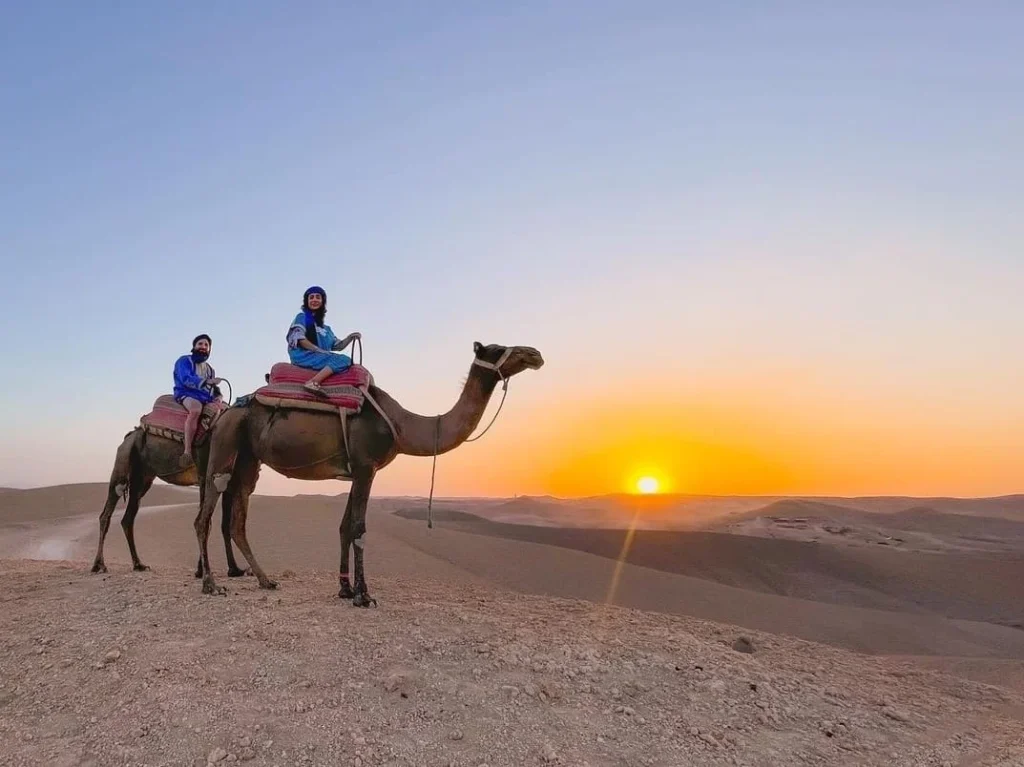
No trip to Morocco is complete without experiencing the magic of the Sahara Desert. The Sahara, with its golden sand dunes and vast, open spaces, is a place of unparalleled beauty and adventure.
- Camel Rides: One of the most iconic experiences in Morocco is a camel ride through the Sahara. As you ride atop these gentle giants, the sun sets over the dunes, painting the sky in shades of orange and pink, creating a moment of serenity and awe.
- Sandboarding: For the more adventurous, the towering sand dunes offer the perfect playground for sandboarding. Glide down the dunes on a board for an adrenaline-pumping experience in one of the world’s most breathtaking landscapes.
- Quad Biking: For those seeking an exhilarating adventure, quad biking across the desert is a must. The thrill of speeding over the sand dunes, with the wind in your hair and the vast desert stretching out before you, is an unforgettable experience.
The Sahara Desert is more than just a destination; it’s an adventure that leaves a lasting impression on all who visit.
5. The Staggering Atlas Mountains: A Trekker’s Paradise
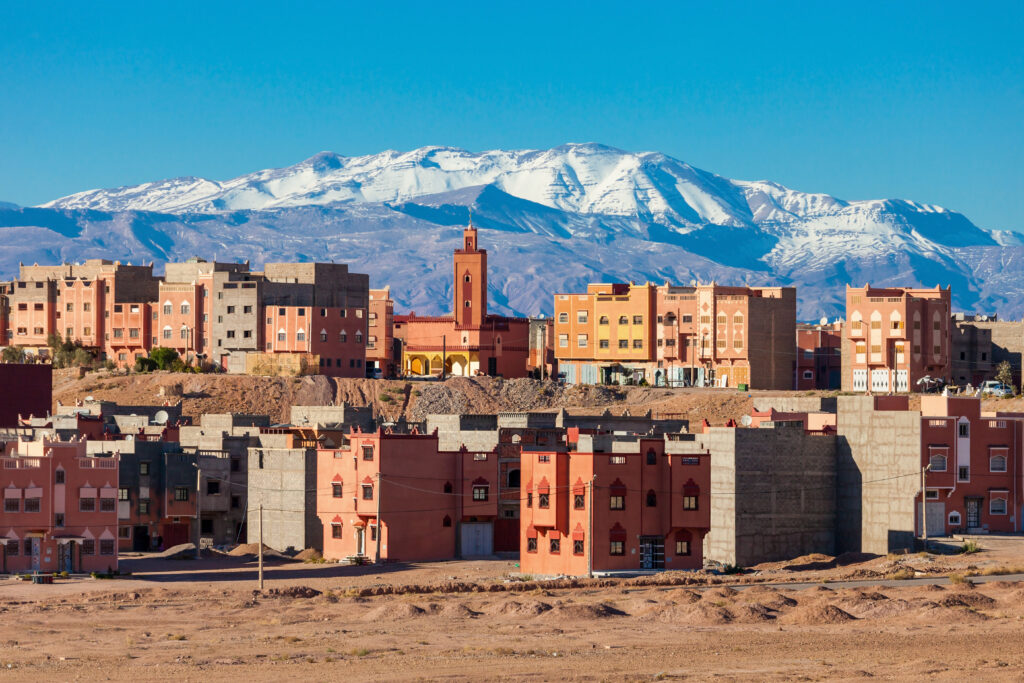
The Atlas Mountains, a range that stretches across Morocco, are a haven for nature lovers and trekkers. This rugged landscape offers a stark contrast to the sandy expanses of the Sahara, with snow-capped peaks, lush valleys, and traditional Berber villages.
- Mount Toubkal: Standing at 4,167 meters, Mount Toubkal is the highest peak in North Africa. The trek to the summit is challenging but rewarding, offering stunning views of the surrounding mountains and valleys. For those who prefer a less strenuous hike, the surrounding trails offer plenty of opportunities to explore the natural beauty of the region.
- Berber Villages: The Atlas Mountains are home to the Berber people, who have lived in these mountains for centuries. Visiting a Berber village offers a unique insight into their way of life, with traditional stone houses, terraced fields, and warm hospitality. Many trekkers choose to stay in a Berber guesthouse, where they can experience authentic Berber cuisine and culture.
Whether you’re an experienced climber or a casual hiker, the Atlas Mountains offer something for everyone.
6. Morocco’s Beaches: From Surfing Hotspots to Tranquil Retreats
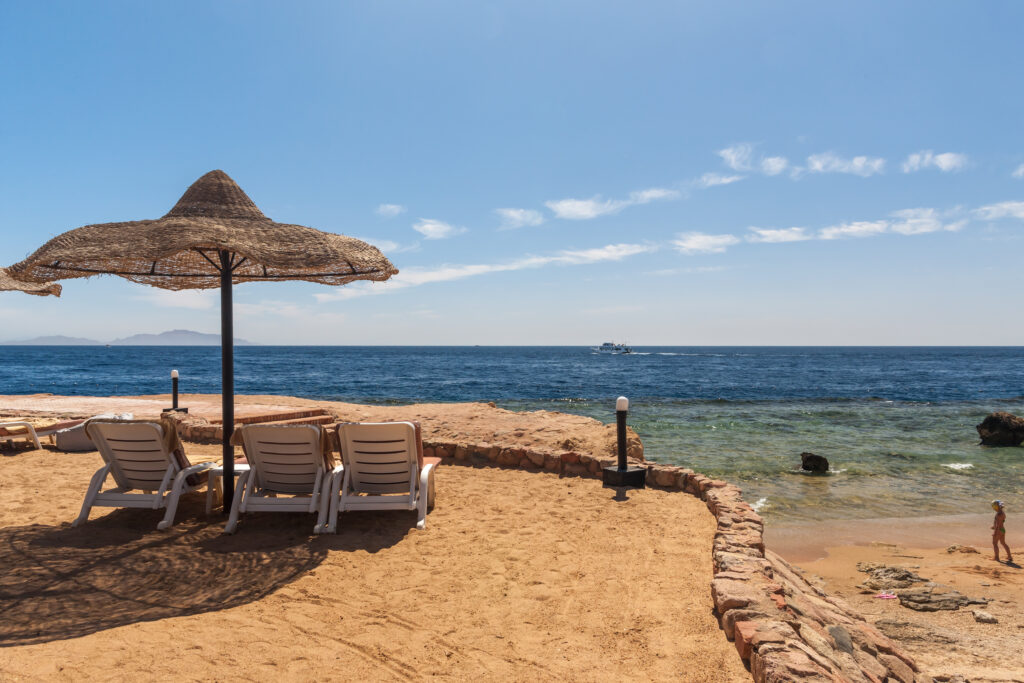
Morocco’s coastline stretches for over 1,800 miles, offering a diverse range of beaches to suit every preference. Whether you’re a surfer looking for the perfect wave or someone seeking a peaceful escape by the sea, Morocco’s beaches have something to offer.
- Taghazout: This small fishing village has become a mecca for surfers from around the world. With consistent waves and a laid-back vibe, Taghazout is the perfect place to catch some waves and relax by the beach.
- Agadir: Known for its wide sandy beaches and modern amenities, Agadir is a popular destination for those looking to unwind by the sea. The beach is lined with cafes and restaurants, making it a great place to enjoy fresh seafood while soaking up the sun.
- Asilah: If you’re looking for a quieter, more traditional beach experience, Asilah is the place to go. This charming town on the Atlantic coast is known for its whitewashed buildings and beautiful beaches. It’s the perfect place to relax and enjoy the slower pace of life.
7. Ski Resorts of Morocco: A Winter Wonderland in the Atlas Mountains
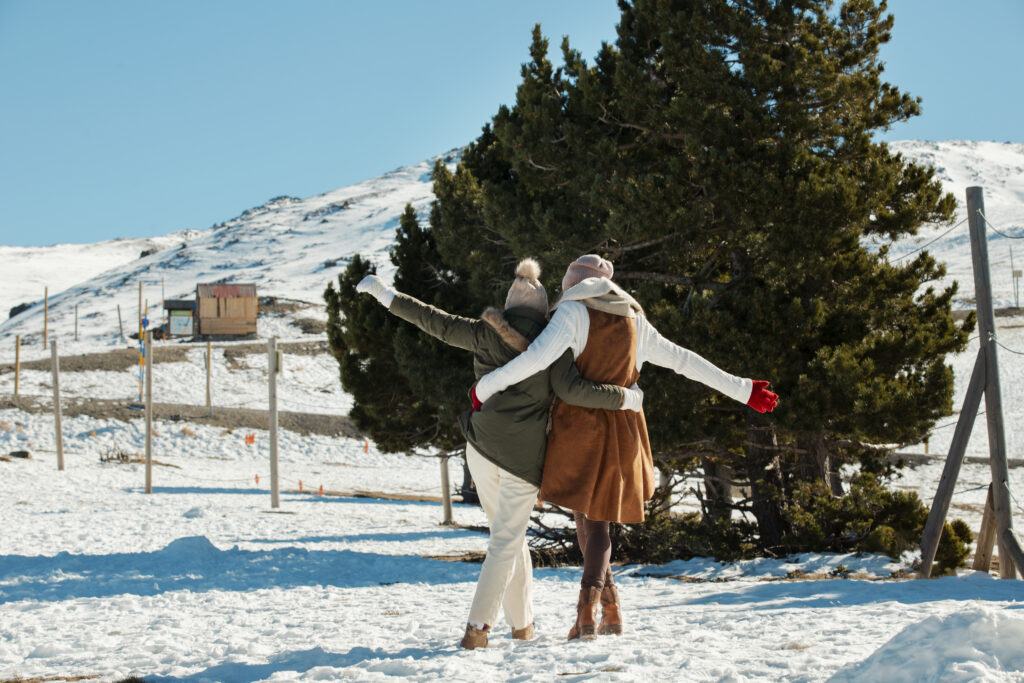
It might come as a surprise to some, but Morocco is also a destination for winter sports enthusiasts. The Atlas Mountains are home to several ski resorts, offering a unique opportunity to ski in Africa.
- Oukaïmeden: Located just 75 kilometers from Marrakech, Oukaïmeden is the largest ski resort in Morocco. With a range of slopes suitable for both beginners and experienced skiers, it’s a great place to enjoy a day of skiing or snowboarding. The resort also offers stunning views of the surrounding mountains and valleys.
- Ifrane: Known as “Little Switzerland,” Ifrane is a charming town in the Middle Atlas Mountains. In winter, the town transforms into a winter wonderland, with snow-covered streets and a cozy alpine atmosphere. Ifrane is also home to a small ski resort, making it a popular destination for families and beginners.
- Jebel Mischliffen: Another popular ski destination, Jebel Mischliffen offers a more rustic skiing experience. The resort is less developed than Oukaïmeden, but its natural beauty and tranquility make it a favorite among locals.
8. Unique Culture of Morocco: A Blend of Tradition and Modernity
Morocco’s culture is a fascinating blend of Arab, Berber, and Mediterranean influences, with a strong foundation in Islam, the dominant religion. This unique cultural mix is reflected in every aspect of Moroccan life, from the architecture and clothing to the music and festivals.
- Islamic Heritage: As an Islamic country, Morocco is home to numerous mosques, many of which are architectural masterpieces. The Hassan II Mosque in Casablanca, with its towering minaret and intricate tilework, is one of the most stunning examples of Islamic architecture in the world. Visitors are often struck by the mosque’s grandeur, where tradition and artistry converge in an awe-inspiring display.
- Traditional Attire: The traditional clothing of Morocco, particularly the djellaba and kaftan, reflects the country’s cultural heritage. These garments, often made from beautiful fabrics and adorned with intricate embroidery, are worn during special occasions and festivals. The djellaba, a long, loose robe with a hood, is commonly worn by both men and women, while the kaftan is a more ornate garment typically worn by women during celebrations.
- Festivals and Celebrations: Morocco’s calendar is filled with festivals that showcase its rich cultural heritage. Ramadan and Eid al-Fitr are two of the most important Islamic holidays, observed with fasting, prayer, and communal gatherings. Moussem festivals, such as the Moussem of Tan-Tan, celebrate the traditions of Moroccan tribes, featuring music, dancing, and vibrant displays of cultural pride. The Fez Festival of World Sacred Music is another highlight, attracting artists and visitors from around the globe to celebrate spiritual and sacred music in the heart of Morocco’s spiritual capital.
9. World’s First University: A Legacy of Learning in Fez
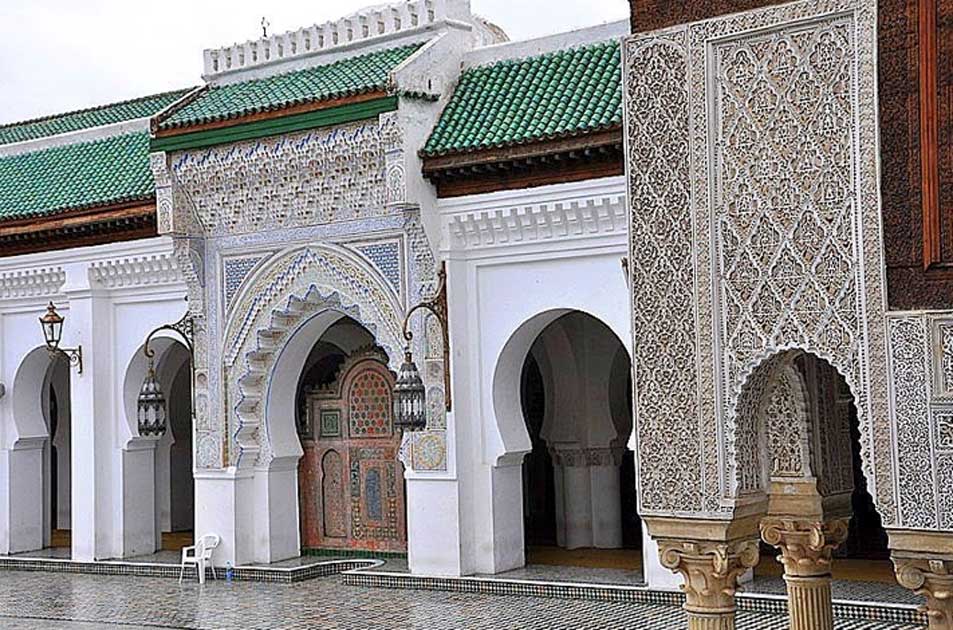
Morocco’s commitment to education and knowledge is epitomized by the University of Al-Qarawiyyin in Fez, recognized as the world’s first university. Founded in 859 AD by Fatima al-Fihri, a visionary woman, this institution has been a beacon of learning for over a millennium.
- Architectural Splendor: The university’s architecture is a testament to the grandeur of Islamic design. Intricate archways, courtyards adorned with fountains, and beautifully decorated prayer halls create an environment that inspires learning and contemplation. The university is not only a place of education but also a symbol of Morocco’s rich intellectual and cultural heritage.
- A Center of Knowledge: Over the centuries, Al-Qarawiyyin has been a center for Islamic studies, attracting scholars, philosophers, and theologians from across the Muslim world. Today, it continues to function as a place of higher learning, where tradition and modernity coexist, fostering a spirit of inquiry and intellectual growth.
10. Moroccan Hammams:
The hammam is an integral part of Moroccan culture, offering a unique blend of relaxation and cleansing. These traditional steam baths are found throughout the country, from basic communal facilities to luxurious spas in upscale riads.
- The Hammam Experience: Visiting a hammam is more than just a bath; it’s a ritual that involves a series of cleansing and exfoliating steps. After spending time in the steam room to open up the pores, visitors are scrubbed down with a coarse glove known as a kessa, removing dead skin and leaving the body feeling refreshed and revitalized. The experience is often followed by a massage with argan oil, adding to the overall sense of relaxation.
- Cultural Significance: Hammams have long been a place for socializing and community bonding, particularly for women. It’s a space where people gather to relax, share stories, and unwind, making it an important part of Moroccan social life. For visitors, a trip to the hammam offers not only a chance to rejuvenate but also to connect with Moroccan traditions.
11. Experience Berber Culture:
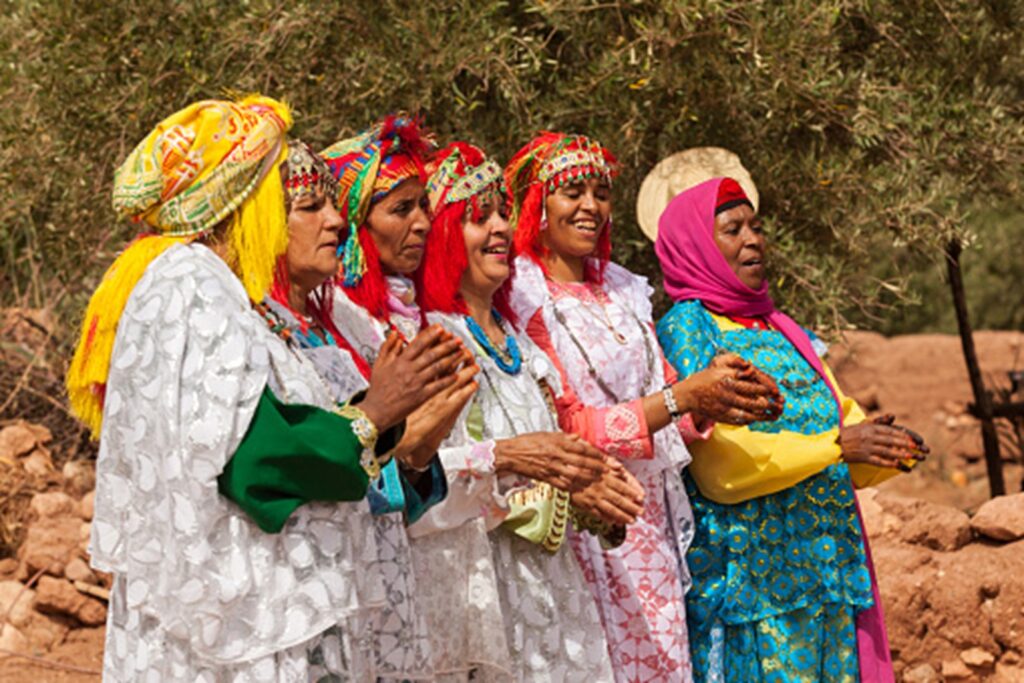
The Berbers, or Amazigh, are the indigenous people of Morocco, and their culture is an essential part of the country’s identity. With a history that predates the Arab conquest, the Berbers have preserved their unique language, traditions, and way of life for thousands of years.
- Berber Villages: Scattered across the Atlas Mountains and the Sahara, Berber villages offer a window into a way of life that has remained largely unchanged for centuries. Visitors to these villages can experience traditional Berber hospitality, characterized by warmth and generosity. A stay in a Berber guesthouse, known as a gîte, allows travelers to immerse themselves in local customs, from sharing meals prepared with locally sourced ingredients to participating in community activities.
- Berber Festivals: The Berber New Year, known as Yennayer, is celebrated with great enthusiasm, featuring traditional music, dancing, and feasting. Another important celebration is the Imilchil Marriage Festival, where young Berbers from different tribes gather to find a spouse. This festival is a vibrant display of Berber culture, with participants dressed in colorful attire and adorned with silver jewelry.
- Traditional Crafts: The Berbers are renowned for their craftsmanship, particularly in weaving, pottery, and jewelry making. Berber carpets, known for their bold geometric patterns and vibrant colors, are highly sought after by collectors and interior designers alike. Handcrafted silver jewelry, often embellished with semi-precious stones, is another hallmark of Berber artistry, reflecting the intricate designs passed down through generations.
12. The Astonishing Sahara Desert: Morocco’s Natural Wonder
The Sahara Desert, the world’s largest hot desert, is one of Morocco’s most iconic attractions. Its vast, undulating sand dunes, stretching as far as the eye can see, create a landscape that is both otherworldly and mesmerizing.
- Erg Chebbi: One of the most famous sand dune areas in the Sahara, Erg Chebbi, near the town of Merzouga, offers an unforgettable desert experience. Visitors can take camel rides at sunrise or sunset, when the light transforms the dunes into a sea of gold and orange. Spending a night in a desert camp, under a canopy of stars, is an experience that resonates with the soul.
- Desert Activities: Beyond camel rides, the Sahara offers a range of activities for adventure seekers. Sandboarding down the dunes, quad biking across the desert, and exploring the region’s oases and palm groves are just a few of the ways to experience the raw beauty of the Sahara. The desert is also home to unique wildlife, such as the fennec fox and the Saharan cheetah, making it a fascinating destination for nature lovers.
13. Hidden Treasures of Morocco:
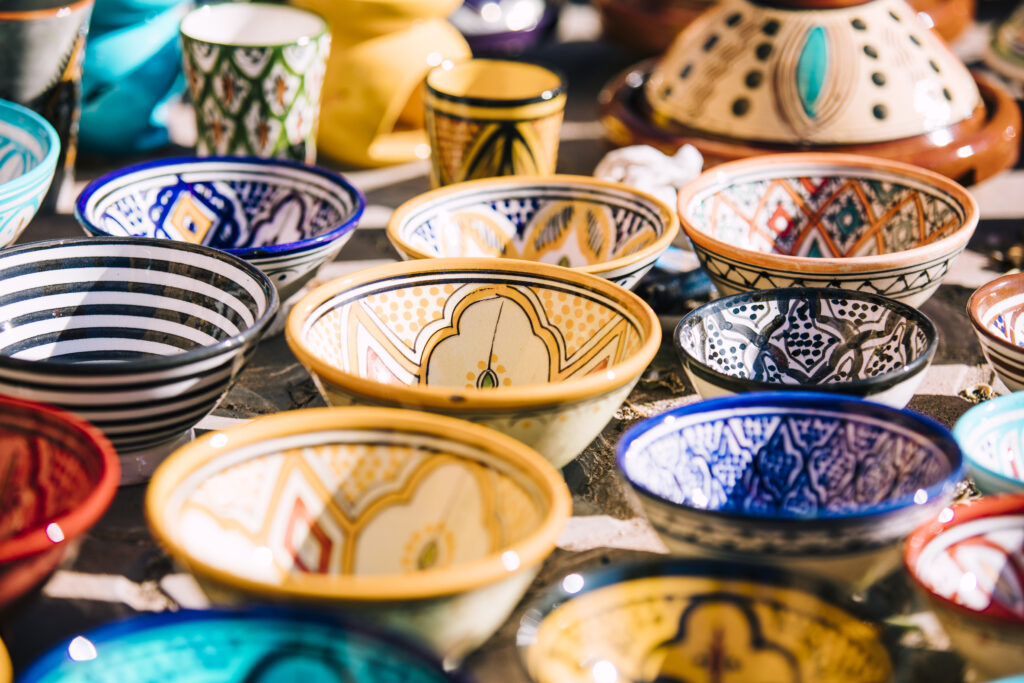
Morocco is a treasure trove of handicrafts, offering visitors a chance to take home a piece of the country’s rich artistic heritage. From vibrant textiles to intricately designed jewelry, the markets of Morocco are filled with unique, handcrafted items that reflect the country’s diverse cultural influences.
- Rugs and Carpets: Moroccan rugs, whether they are the bold, geometric Berber designs or the more intricate patterns from the Middle Atlas, are highly prized. These rugs are often made by hand, using traditional methods passed down through generations. Each rug tells a story, with symbols and motifs that represent different aspects of Moroccan life.
- Leather Goods: The tanneries of Fez and Marrakech are famous for their high-quality leather products. From beautifully crafted bags and wallets to traditional babouches (Moroccan slippers), the leather goods in Morocco are both functional and stylish. The process of tanning leather is an ancient craft, and visitors can witness this age-old tradition in action at the tanneries.
- Jewelry: Moroccan jewelry, particularly Berber pieces, is known for its intricate designs and the use of silver and semi-precious stones. These pieces often feature symbolic motifs that carry cultural significance, making them not just beautiful accessories but also meaningful keepsakes.
- Ceramics: Moroccan ceramics, with their vibrant colors and intricate patterns, are another popular item for visitors. The city of Safi is particularly known for its pottery, where artisans create beautiful plates, bowls, and tagines that are as functional as they are decorative.
Conclusion: The Allure of Morocco
Morocco is a country that offers an endless array of experiences, from its rich history and cultural heritage to its stunning natural landscapes, and vibrant cities. Whether you’re exploring the ancient medinas, trekking through the Atlas Mountains, or riding camels across the Sahara Desert, Morocco has something to captivate every traveler.
As a tour company based in Marrakech specializing in Morocco desert tours, we invite you to discover the magic of this country with us. Morocco’s charm lies not only in its famous landmarks, and attractions but, also in the warmth of its people, the richness of its traditions, and the diversity of its landscapes. Whether you’re seeking adventure, relaxation, or cultural tour, Morocco promises an unforgettable trip, that will leave you longing to return.
